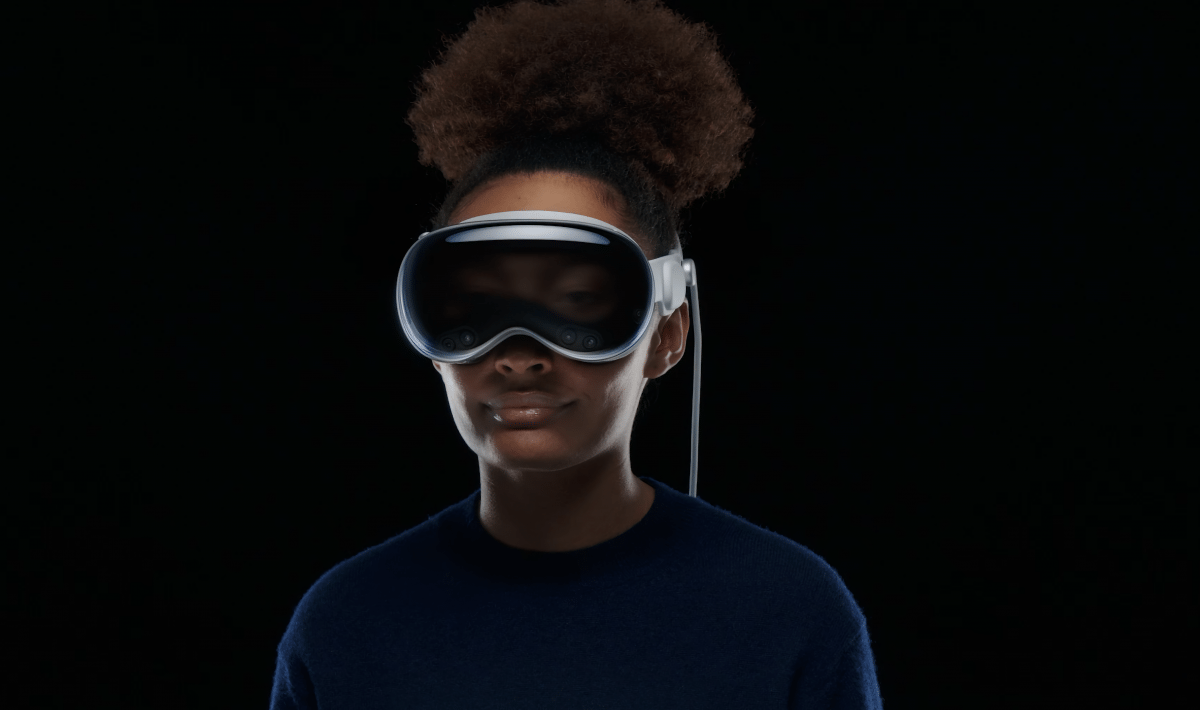The “one more thing,” the one more thing Apple announced at this year’s Worldwide Developers Conference (WWDC), was the industry’s worst-kept secret: The Apple Vision Pro is the tech giant’s attempt at mixed reality -Headset to market. It was received with fascination and mixed feelings: The new device is a technical masterpiece, but it also has a proud price of 3,499 dollars.
developer belief
But there’s another point that could prove to be a problem: convincing developers to sign up native apps for the new platform, the visionOS operating system. Because Apple hopes that the Vision Pro will fundamentally change the way we interact with our devices – that once we’re freed from the constraints of a smartphone or tablet screen, we’ll embrace the “spatial computing” that the group demonstrated in its promotional videos. For example, there is eye recognition that recognizes what the user is looking at, and actions are triggered with small finger gestures. One seems to interact magically with applications, say first testers, without buttons or a screen.
That could basically be great for consumers. But it’s a headache for Apple’s app developers. Apple has already stated that existing apps developed for the iPad will run on visionOS without any changes. iPhone apps can also be called up. However, these existing programs are displayed in a virtual window that has little to do with Mixed Reality. To take full advantage of the technology and make the leap from the screen to the virtual world, apps need to be overhauled.
For René Schulte of Italian company Reply, which designs 3D environments as part of its business, the announcement was a significant event. However, he cautions that much of what was shown in Apple’s demo videos only makes limited use of the possibilities that mixed reality is supposed to offer. “What I didn’t like was the focus on 2D content,” he says. Schulte has been working with Microsoft’s HoloLens mixed reality glasses and the Oculus Rift from Facebook’s parent company Meta since 2015. He feels that some opportunities to overhaul the Vision Pro user experience have been missed.
How to design a spatial operating system?
This is partly due to the challenges involved in redesigning apps for an entirely new interface. Reply published a whitepaper last year on how to convert apps from two to three dimensions. In it, the experts admit that this change in mentality is not easy.
“Designers have to learn new methods and skills and also get used to new tools,” says Schulte. “Designing for 3D isn’t just about throwing 2D concepts into three-dimensional space.” But that’s exactly what he saw, for example, during the presentation of Adobe Lightroom and Microsoft Office for the Vision Pro.
Denys Zhadanov is a board member and former VP of Readdle, a Ukrainian development company that creates a number of popular productivity apps for iOS. He is enthusiastic about the possibilities of the Vision Pro, but admits that the Readdle apps would have to be reworked for this.
“We have a lot of custom elements in our apps, so we have to adjust them and spend time making everything work smoothly on Vision Pro,” he says. Still, Zhadanov sees the Vision Pro’s augmented reality options as useful for his company’s apps. “I still need to explore these ideas,” he says. The device itself is phenomenal. The forthcoming release of a software development kit (SDK) for the Vision Pro is helpful, he adds — it’s coming later this month. (Apple did not respond to requests for comment on this article).
Development costs high
But even with Apple’s support, some developers are unsure how to proceed. “I think cost is going to be a big issue for consumer apps at this point,” said Dylan McKee, co-founder of Nebula Labs, a mobile app development company based in Newcastle, UK.
McKee and others will have to decide whether it’s worth the time it takes to upgrade their apps to a new type of display given the potential small audience for a product that’s price prohibitive for many. Analysts at Wedbush Securities predict that Apple will ship around 150,000 Vision Pros in 2024. For comparison: In the first three months of 2023, the company shipped 55 million iPhones.
Zhadanov believes that Apple is positioning the first version of the Vision Pro as a “toy for middle-class people and up”. That will dictate the potential use cases for Readdle’s apps on the Vision Pro and the design decisions the team makes. Given the projected low sales figures, McKee won’t put too much effort into the Vision Pro. “From my personal point of view, only one or two of the apps we’ve developed really make sense to port to,” he says. One of them is an app for training elite athletes, where athletes could benefit from real-time 3D analysis. The other app is a medical education program.
“I think simulating certain training scenarios in virtual space could be invaluable,” says McKee. “But both are niche products compared to the end-user apps that we otherwise produce.”

(bsc)
